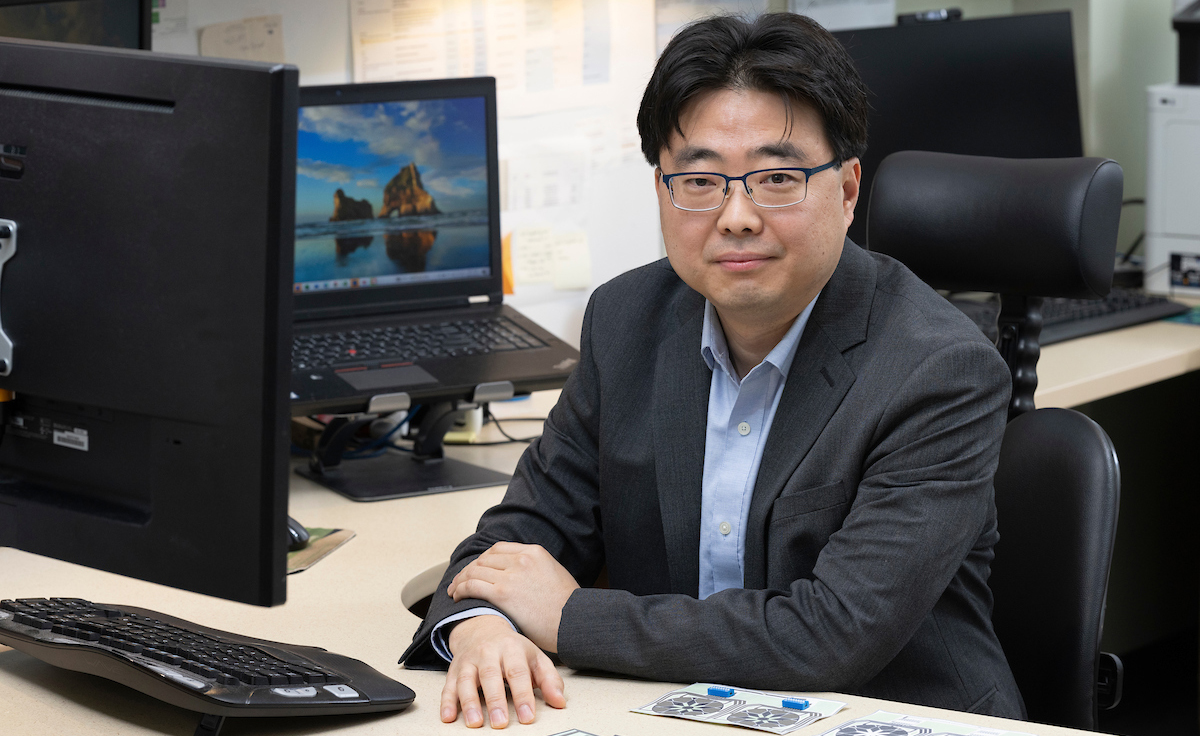Professor seeks to integrate bacteria-fueled biobatteries into 3D-printed circuits
$550,000 grant from National Science Foundation will fund the research

Over the past decade, Binghamton University Professor Seokheun “Sean” Choi has developed a series of bacteria-fueled biobatteries for use in remote locations such as oceans and forests, as well as the human digestive tract.
Now he’s ready for another challenge: Integrating those fuel cells into flexible electronics that are made using the latest 3D printing technology.
A $550,000 grant from the National Science Foundation will fund research into developing a manufacturing process that will not kill the biological components necessary for power generation.
“The next generation of electronics will be all-in-one electronics, with all the components integrated in one single sheet rather than different components assembled later,” said Choi, a faculty member in the Thomas J. Watson College of Engineering and Applied Science’s Department of Electrical and Computer Engineering.
“The problem with microbial fuel cells as a power source is that liquid for bacterial material is not compatible with solid-state electronics. Also, living bacteria cannot survive many extreme microfabrication processes.”
Choi is looking to a solution he found effective for his ingestible biobatteries: Use dormant bacterial spores, which are resistant to harsh conditions and can survive for long periods of time. When the conditions are right, the spores will germinate and generate power.
“There are many different types of energy-harvesting techniques, like mechanical-, solar- or radio frequency-based,” he said. “I still believe that microbial fuel cells are the most suitable, because it’s a living material. They can self-maintain, self-heal and adapt to environmental changes.”
The research ties into Choi’s ideas about ecofriendly electronics that can be used for the Internet of Things to connect more devices into a collective network, even single-use sensors like food packaging, agriculture or “smart bandages.” Thanks to a different NSF grant last year, he has been pursuing better papertronics that are environmentally safe and biodegradable.
“We need to use an energy-harvesting technique so the electronics are functioning for a long time without batteries and never will be electronic waste because of power-source issues,” he said. “We also need ecofriendly electronics. I’m not talking about just the material itself but also the fabrication, operation and everything.”
